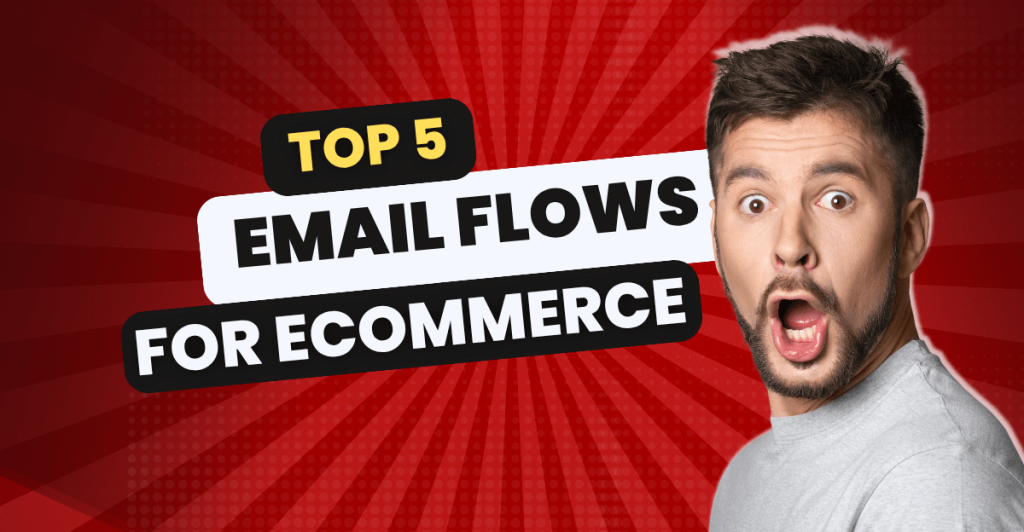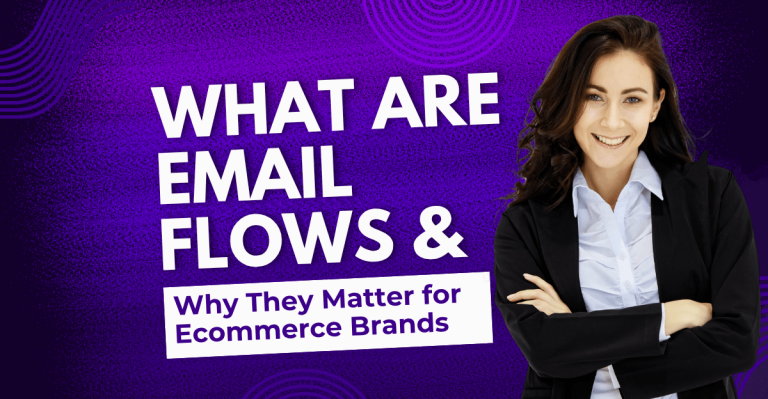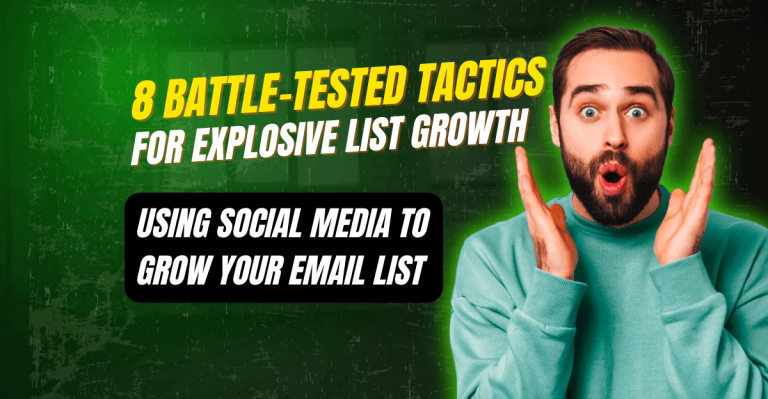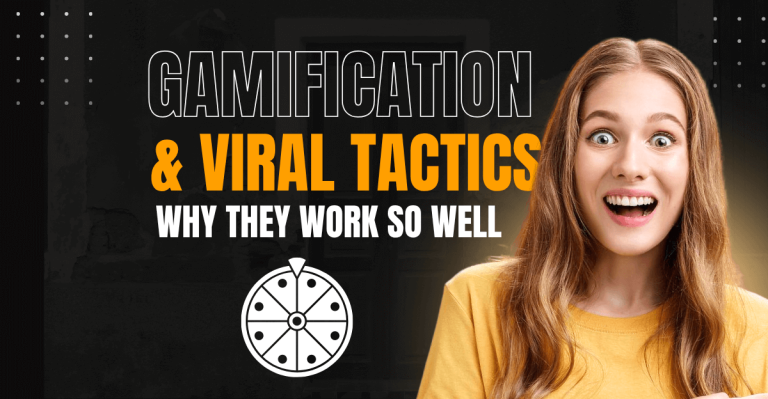Why Email Flows Drive More Revenue Than Campaigns
Context & Persuasion
Email flows outperform one-off campaigns because they adapt to customer behaviors in real time—whereas campaigns broadcast a generic message to everyone, flows deliver pinpointed communications that resonate deeply. This personalization builds trust and relevance, translating directly into revenue.
Email Marketing Tip for Ecommerce Brands:
- Audit your current campaign-versus-flow mix to see which customer behaviors go unaddressed.
- Map existing flows and identify gaps—such as missing browse abandonment or winback flows—to prioritize setup.
Set It and Scale It
Context & Persuasion
Once set up, email flows operate autonomously, working 24/7. Unlike campaigns that require planning and manual execution, flows continually nurture, convert, and retain customers without ongoing effort.
Email Marketing Tip for Ecommerce Brands:
- Use an automation platform like Klaviyo or Omnisend to build evergreen flows.
- Schedule monthly check-ins to review flow performance data—tweak messaging, timing, or incentives as needed.
High Intent = High Conversion
Context & Persuasion
Flows engage based on concrete behaviors—adding an item to cart, making a purchase, or browsing specific products. These signals indicate a customer’s intent, making targeted emails much more effective than generic blasts.
Email Marketing Tip for Ecommerce Brands:
- Tag metrics for each flow by performance: recovery rate, conversion rate, open rate.
- Prioritize flows tied to higher-intent actions—like cart and checkout abandonment—to maximize ROI.
The Top 5 Revenue-Generating Email Flows
1. Abandoned Cart Flow
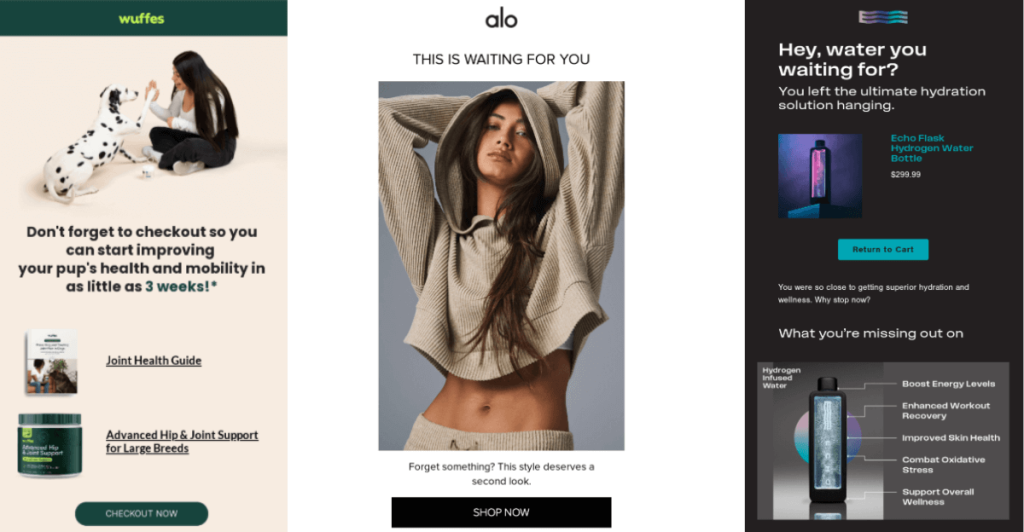
Why It Works
These emails capture customers at a moment of hesitation. A timely nudge, personalized with their cart items and urgency, can tip them into purchase.
Email Marketing Tip for Ecommerce Brands:
- Send the first reminder within 1 hour of abandonment, another at 12 hours, and a final one at 24 hours—with a small incentive if needed
- Use dynamic content to show products left behind and emphasize urgency, like low inventory or limited-time offers.
2. Welcome Flow
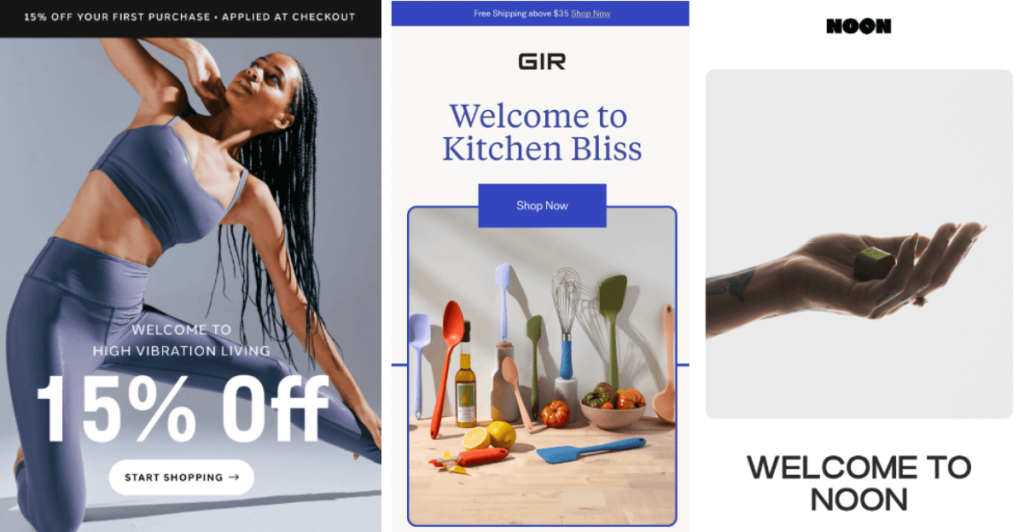
Why It Works
First impressions are powerful. A thoughtful welcome series builds trust, introduces your brand voice, and drives early engagement.
Email Marketing Tip for Ecommerce Brands:
- Kick off with a warm greeting and exclusive discount.
- Follow up with an engaging brand story, product highlights, usage tips, and a reminder to redeem the offer.
3. Post‑Purchase Flow
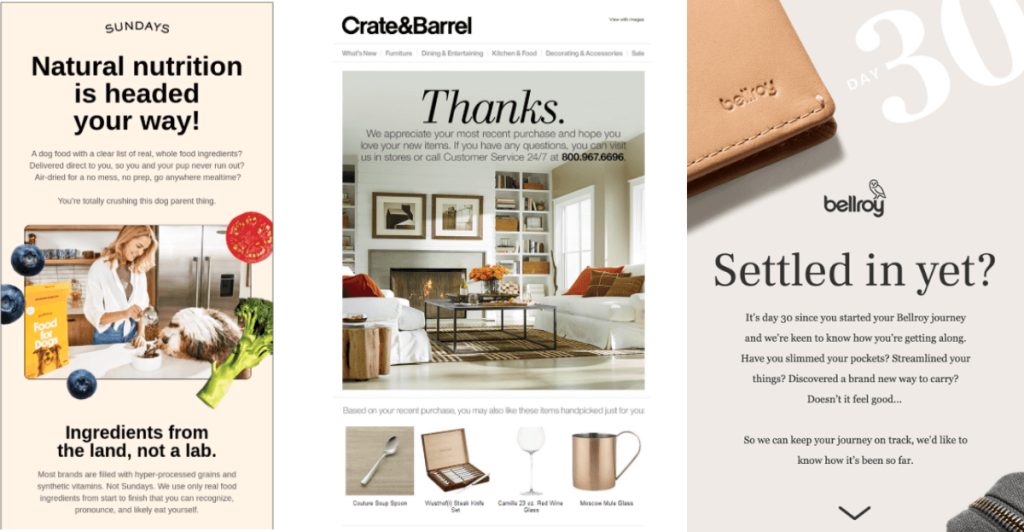
Why It Works
Post-purchase emails reinforce a customer’s decision, turning a one-off sale into a relationship. They can guide usage, request feedback, and fuel repeat purchases.
Email Marketing Tip for Ecommerce Brands:
- Send a thank-you email immediately after purchase, followed by product tips or tutorials.
- A few days later, suggest complementary products and invite reviews—potentially with a discount for participating.
4. Winback Flow
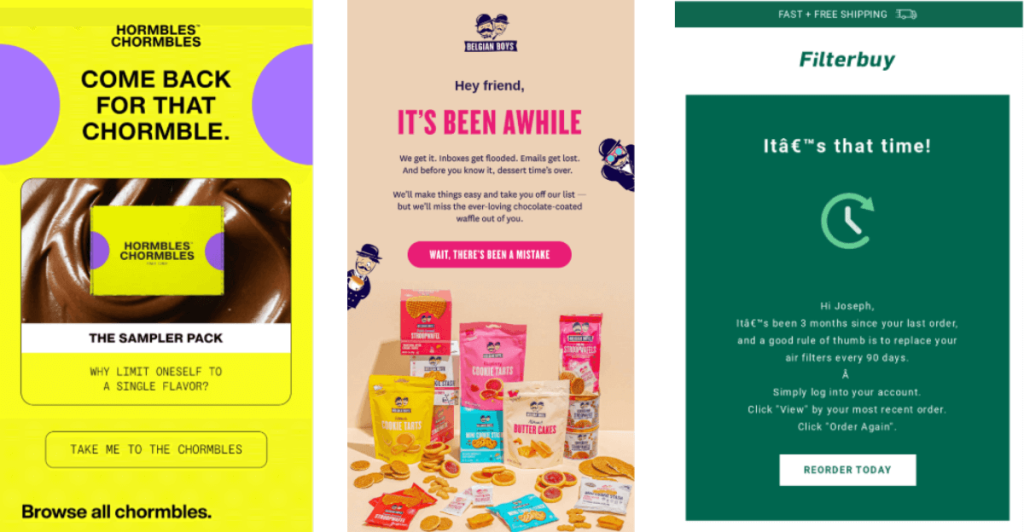
Why It Works
When a customer hasn’t bought in 60–90 days, they’re still reachable. A personalized nudge—perhaps highlighting something new or offering a special deal—can reignite interest.
Email Marketing Tip for Ecommerce Brands:
- Identify lapsed customers and send a “We miss you” message with a compelling offer.
- Use FOMO or limited-time language to encourage them to come back.
5. Browse Abandonment Flow
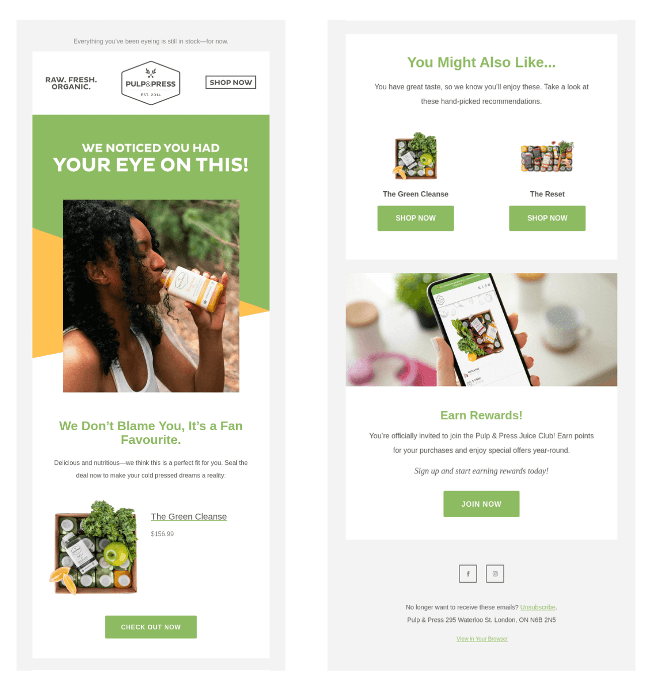
Why It Works
When customers browse but don’t add to cart, they’re expressing interest without commitment. This mid-funnel trigger lets you reconnect early.
Email Marketing Tip for Ecommerce Brands:
- Trigger emails when users view products but don’t engage further.
- Include product visuals, social proof, or user-generated content to nurture discovery.
How These Flows Impact Customer Lifetime Value (CLV)
Context & Persuasion
Consistent, behavior-driven flows foster customer loyalty by reducing churn, increasing repeat purchases, and reinforcing your brand over time. Many brands see a 25–40% CLV uplift over a year.
Email Marketing Tip for Ecommerce Brands:
- Monitor repeat purchaser rate and LTV before and after implementing flows.
- Add check-ins to analyze whether specific flows—like post-purchase or winback—yield sustained purchase cycles.
Flow Setup Tips: Make Every Email Count
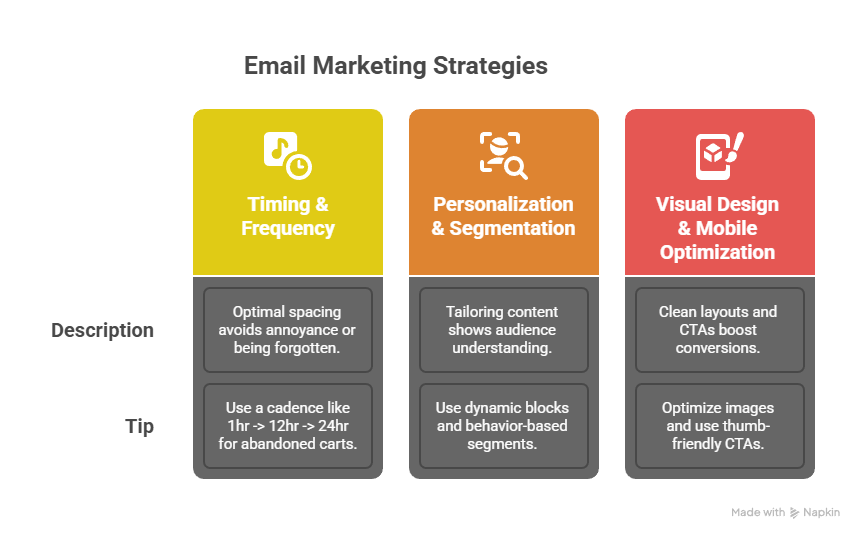
Timing & Frequency
Space your emails thoughtfully—too close, and you annoy; too far, and they forget.
Email Marketing Tip for Ecommerce Brands:
- Use a cadence like 1 hour → 12 hours → 24 hours for abandoned cart flows.
- For winbacks or browse flows, test varied timing windows to find what resonates.
Personalization & Segmentation
Show that you know your audience—tailor content for VIPs, repeat buyers, or first-timers.
Email Marketing Tip for Ecommerce Brands:
- Use dynamic product blocks and behavior-based segments.
- Test variations based on location, past purchases, or engagement level.
Visual Design & Mobile Optimization
Clean, mobile-first layouts with clear CTAs improve conversions.
Email Marketing Tip for Ecommerce Brands:
- Optimize images and avoid slow-loading assets.
- Keep CTAs bold and thumb-friendly; test layouts across different devices.
FAQs: Revenue‑Boosting Email Automation
What platform is best?
Klaviyo is widely favored, but Omnisend, Mailchimp, and Drip also offer robust automation capabilities.
Can I set it up myself?
Yes—begin with a simple 3–5 email flow per trigger, then refine with data or get help from an agency.
What’s a good open rate for flows?
Welcome and cart flows often perform in the 40–50% range; post‑purchase sits around 30%.
How long should each flow be?
Start with 3–5 emails, then expand or optimize based on click-through and conversion performance.
Are flows different from newsletters?
Absolutely—newsletters are manual broadcasts; flows are automated, behavior-triggered.
Build These Flows & Watch Your Sales Grow
Great ecommerce brands don’t send more emails—they send the right ones at the right time. If you’re missing these top five flows, you’re leaving money on the table.

